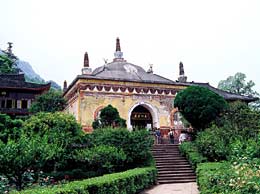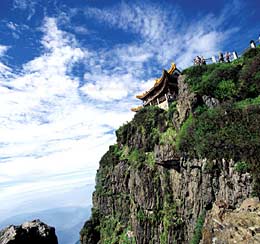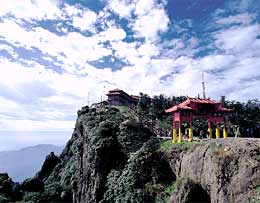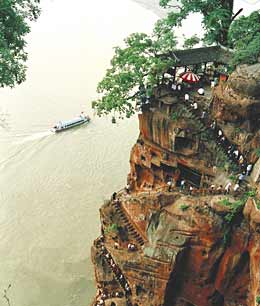Mount Emei and the Leshan Giant Buddha
Mount Emei rises in the southwestern part of the Chengdu Plain in Emeishan City, with its highest peak being 3,099 meters above sea level. The craggy southern part of the mountain is crisscrossed by ravines and covered with a dense growth of plants, while the northern part features sheer precipices, and waterfalls cascading down the slope.
Mount Emei is called the “mountain of brightness” in Buddhism. The legend goes that the Guangxiang Temple on the mountain top was where the goddess of benevolence performed Buddhist rituals, thus making it one of the four famous sacred mountains of Buddhism in China. There used to be over 100 temples and halls on the mountain, but only some 20 still stand. The Baoguo Temple situated at the foot of the mountain is the largest temple on Mount Emei, built during the Ming Dynasty (1368-1644). The red copper Huayan Pagoda inside the temple is an important relic for studying Chinese Buddhism. The 14-storyed pagoda is seven meters high and its walls are engraved with more than 4,700 images of Buddha and the full text of the Buddhist Sutra of the Huayan Sect.
 |
Mount Emei and the Leshan Giant Buddha have now been unified into one scenic area and were put on the world cultural and natural heritage lists in 1996.
 |
 |
 |
 |
 |
 |
Mount Emei Scenic Area Management Committee
Tel: 86-833-5590111
Leshan Giant Buddha Management Committee
Tel: 86-833-2302131
(China.org.cn September 12, 2003)
 0
0 







Go to Forum >>0 Comments